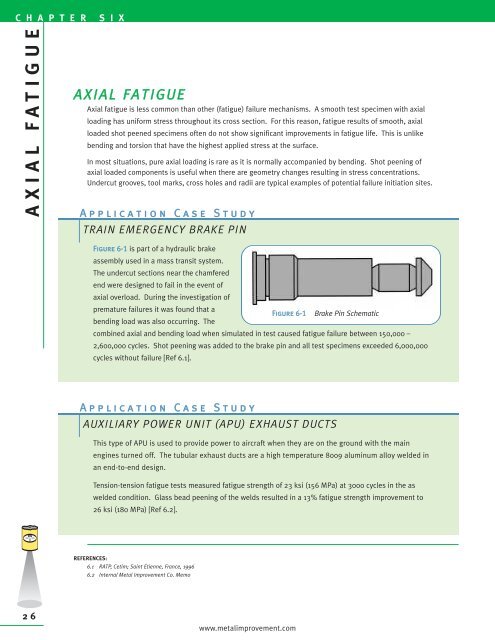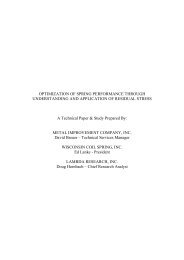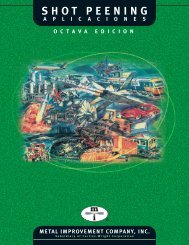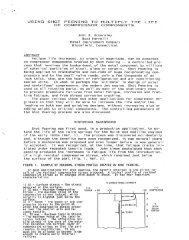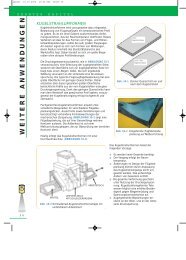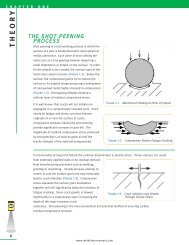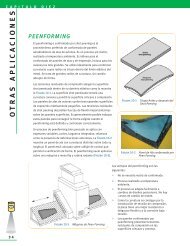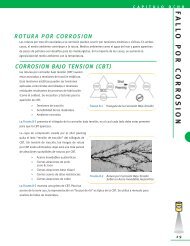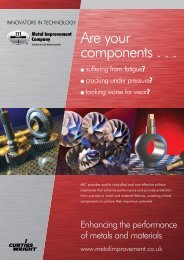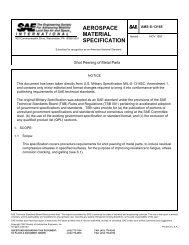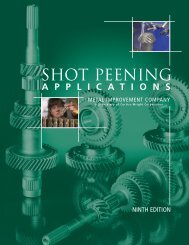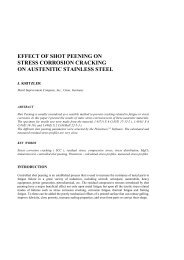shot peening residual stress - Metal Improvement Company
shot peening residual stress - Metal Improvement Company
shot peening residual stress - Metal Improvement Company
Create successful ePaper yourself
Turn your PDF publications into a flip-book with our unique Google optimized e-Paper software.
C H A P T E R S I X<br />
A X IAL F A T IGUE<br />
26<br />
A X I A L F A T I G U E<br />
Axial fatigue is less common than other (fatigue) failure mechanisms. A smooth test specimen with axial<br />
loading has uniform <strong>stress</strong> throughout its cross section. For this reason, fatigue results of smooth, axial<br />
loaded <strong>shot</strong> peened specimens often do not show significant improvements in fatigue life. This is unlike<br />
bending and torsion that have the highest applied <strong>stress</strong> at the surface.<br />
In most situations, pure axial loading is rare as it is normally accompanied by bending. Shot <strong>peening</strong> of<br />
axial loaded components is useful when there are geometry changes resulting in <strong>stress</strong> concentrations.<br />
Undercut grooves, tool marks, cross holes and radii are typical examples of potential failure initiation sites.<br />
A p p l i c a t i o n C a s e S t u d y<br />
TRAIN EMERGENCY BRAKE PIN<br />
Figure 6-1 is part of a hydraulic brake<br />
assembly used in a mass transit system.<br />
The undercut sections near the chamfered<br />
end were designed to fail in the event of<br />
axial overload. During the investigation of<br />
premature failures it was found that a<br />
bending load was also occurring. The<br />
Figure 6-1 Brake Pin Schematic<br />
combined axial and bending load when simulated in test caused fatigue failure between 150,000 –<br />
2,600,000 cycles. Shot <strong>peening</strong> was added to the brake pin and all test specimens exceeded 6,000,000<br />
cycles without failure [Ref 6.1].<br />
A p p l i c a t i o n C a s e S t u d y<br />
AUXILIARY POWER UNIT (APU) EXHAUST DUCTS<br />
This type of APU is used to provide power to aircraft when they are on the ground with the main<br />
engines turned off. The tubular exhaust ducts are a high temperature 8009 aluminum alloy welded in<br />
an end-to-end design.<br />
Tension-tension fatigue tests measured fatigue strength of 23 ksi (156 MPa) at 3000 cycles in the as<br />
welded condition. Glass bead <strong>peening</strong> of the welds resulted in a 13% fatigue strength improvement to<br />
26 ksi (180 MPa) [Ref 6.2].<br />
REFERENCES:<br />
6.1 RATP, Cetim; Saint Etienne, France, 1996<br />
6.2 Internal <strong>Metal</strong> <strong>Improvement</strong> Co. Memo<br />
www.metalimprovement.com


